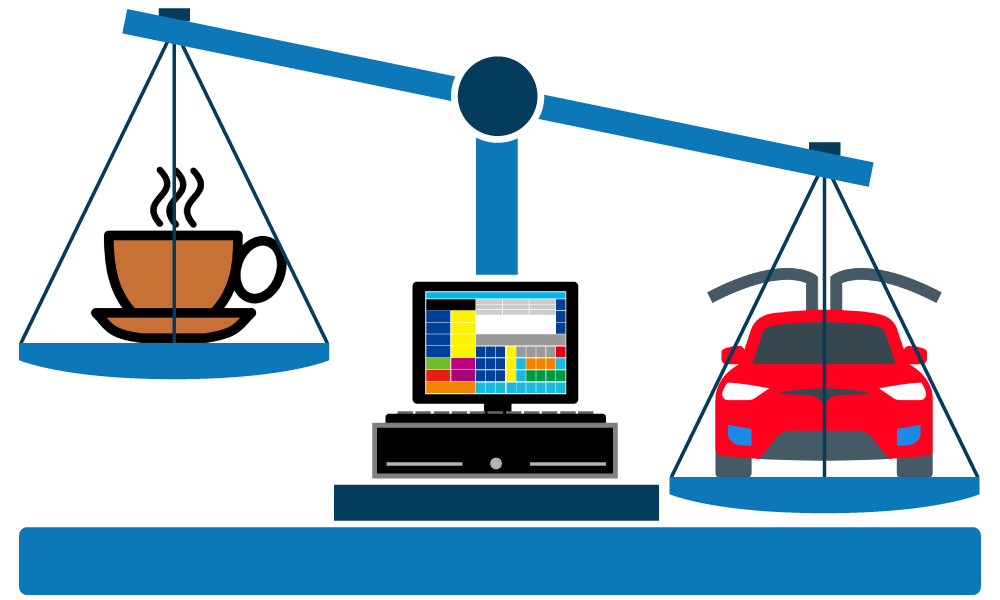When it comes to finding your new POS system, one of the first questions you’ll probably ask is, “what’s the price?” It’s important to get this information early on, to ensure the system falls within your budget. If your budget is limited, then you need to make sure that the company you’re talking to has an affordable POS system that is right for you.
But just because you’re quoted a price, there’s no guarantee that is what you’ll actually end up paying. This is especially true when it comes to getting a bundled POS system where all of the basic hardware and software to manage your POS are included together.
Bundled POS systems are notorious for having hidden costs associated with them, which can result in a difference of hundreds or even thousands of dollars between the quoted price and the actual final price. Here is how you can uncover these hidden costs and find out the true price of a bundled POS system before you buy it.
Being Limited to One Payment Processor
Even though a bundled POS might seem appealing, since it provides everything you need in one place, you need to look beyond what is included to see the more important factor, which is everything that isn’t included. This is especially true when it comes to payment processors.
Many bundled POS systems will restrict you to using a single payment processing company of their choosing. Worse yet, these fees can be partially or mostly hidden, which prevents you from figuring out how much your processing costs will be each month. So even though a bundled POS might look like it’s saving you a significant amount of money, it could end up saddling you with high processing fees that eat away at your profits.
Your POS provider should allow you to choose your processor, which gives you the ability to negotiate the most favorable rates.
Understanding Processor Pricing Models
There are typically three different types of pricing models for payment processing:
- Interchange Plus (Interchange fee + transaction fee)
- Flat Fee (% of total check + transaction fee)
- Tiered (% of total check at a qualified/mid-qualified/non-qualified rate)
Pros and Cons of Interchange Plus:
✔️ Easily separated processing fees to get a clear understanding of the interchange costs compared to the processor markup
❌ It can be difficult reading the bill when it comes due to the sheer amount of details included
Pros and Cons of Flat Fee:
✔️ Predictable payment processing costs
✔️ Locations with low-volume sales don’t have to worry about struggling to negotiate interchange fee
❌ Much higher likelihood of overpaying for payment processing
❌ Fees drastically increase as sales increase
Pros and Cons of Tiered:
✔️ Produces easy to read statements with fees separated into three distinct categories
❌ Arbitrary categorizing of payments from the processing company
❌ Nearly impossible to predict processing costs
Although each of these models has its own set of advantages and disadvantages, it is important to understand how all four of them will affect your bottom line. The option used by many POS companies like Toast and Square is the flat fee model.
For example, you may see a standard processing percentage of 2.6%, plus a transaction fee of $0.10.
Looking at these pricing models on a transaction-by-transaction basis makes it seem like a good idea. After all, processing each transaction costs less than a cup of coffee. However, when you look at the bigger picture, it really puts the fees into perspective. Suddenly, the cost could go from a cup of coffee for each transaction to the price of the payments on a brand new Tesla each month.

The flat-fee model becomes especially damaging to a growing restaurant. The more sales you make, the higher your fees become. Suddenly, the monthly cost of your POS is double or even triple what it was a year ago when your sales were much lower. The last thing any owner needs is the feeling that they’re being punished for growing their business.
By using one of the fixed-rate pricing models (interchange plus and interchange differential), you can avoid rising fees. And with SaaS (cloud-based) pricing, the fixed rate that you will be charged on a monthly basis will be much lower. Possibly a fifth or even tenth of what the monthly fees might add up to through a bundled flat-fee pricing model.
To help you figure out the true cost of your bundled POS system, we have created this online calculator. Fill in your details and find out how much you can save by switching to a SaaS POS that offers you the freedom to choose your own credit card processor.
Posted on Wed, Apr 21, 2021 @ 08:04 AM.
Updated on May 5, 2021 @ 8:23 PM PST.


